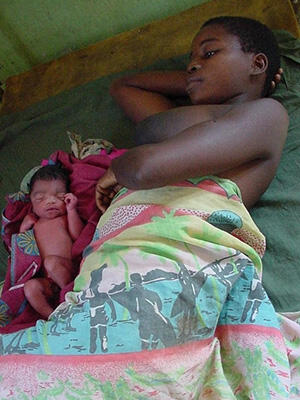
There is no evidence that HIV is a factor in preterm birth in Africa according research carried out by LSTM’s Centre for Maternal and Newborn Health (CMNH), in collaboration with the University of Liverpool. The study, published this week in Plos One, looked at ‘Factors Associated with Preterm, Early Preterm and Late Preterm Birth in Malawi.
The study, undertaken by the Head of CMNH, Professor Nynke van den Broek, along with Dr Rachel Jean-Baptiste of CMNH and Professor James P. Neilson from Department of Women’s and Children’s Health at the University of Liverpool, carried out secondary analysis of data for 2,149 women with gestational birth age determined through ultrasound measurement in early pregnancy. Using Multivariate Logistic Regression analysis the team obtained models for three outcome variables: all preterm, early preterm and late preterm birth.
Mortality in the first four weeks of life accounts for between 24 and 56% of all deaths among children under five, with 75% of these occurring in the first week of life. 99% of the four million neonatal deaths each year occur in low income countries and 35% are attributed to preterm birth. Using ultrasound for an accurate assessment of gestational age, a review of reported preterm birth rate from 184 countries found Malawi to have the highest rate at 18%.
Professor van den Broek commented: “An understanding of causes of the very high rates of preterm birth in Malawi may not only be of potential value to clinicians and policy makers in the local population, but may provide more generalizable insights to the clinical and research communities internationally.”
The study found that compared to women who delivered at term, women who delivered late preterm had significantly lower mean BMI at booking and throughout pregnancy. Thus maternal underweight, malaria and anaemia were found to be major risk factors for preterm birth in Malawi and the study underscored the importance of women’s pregnancy history.
The study can be found here.